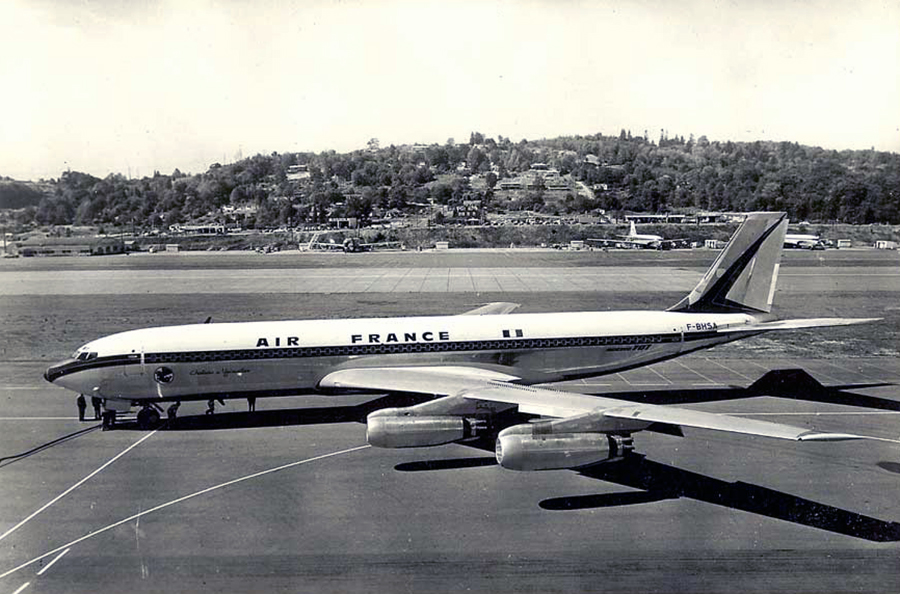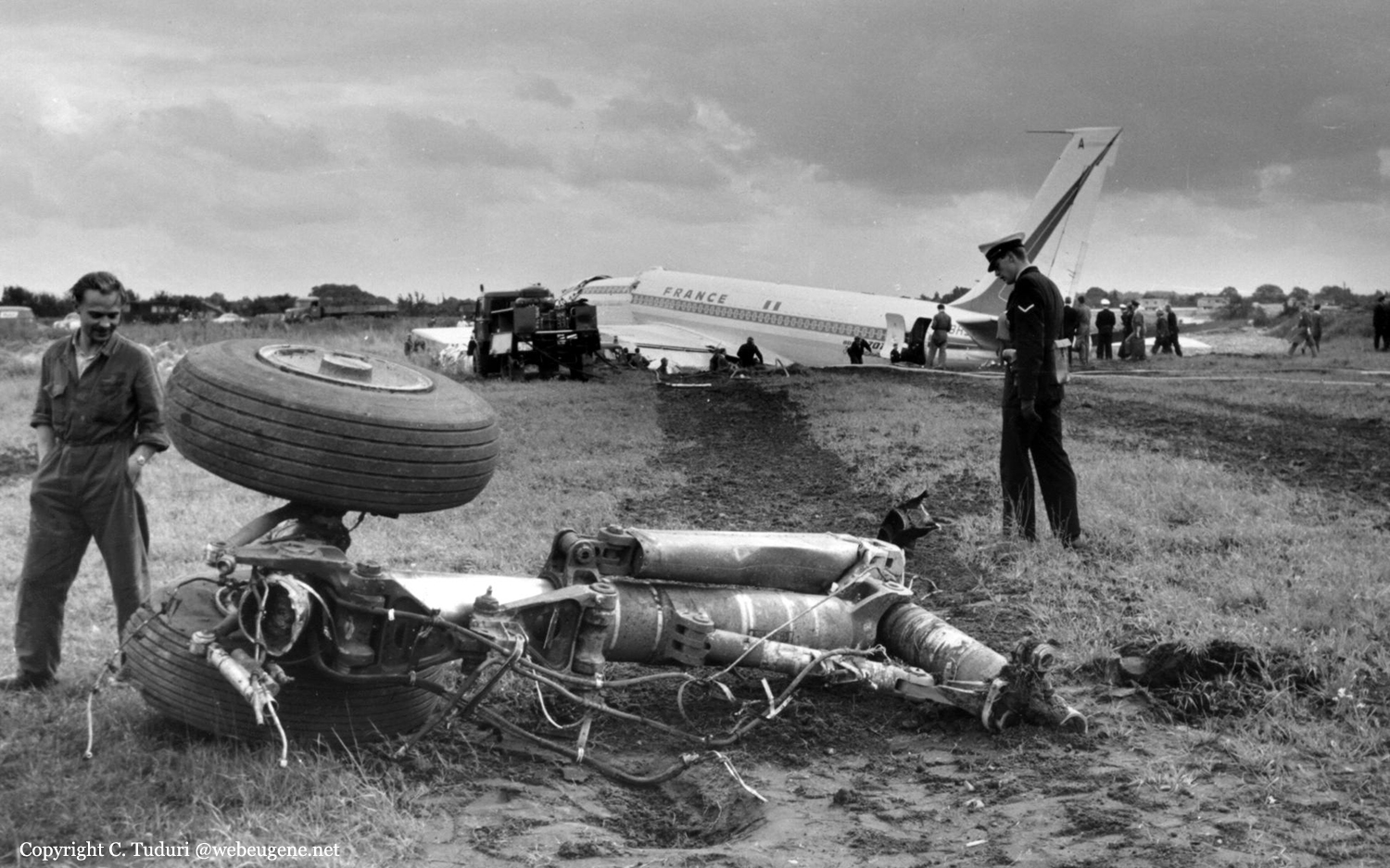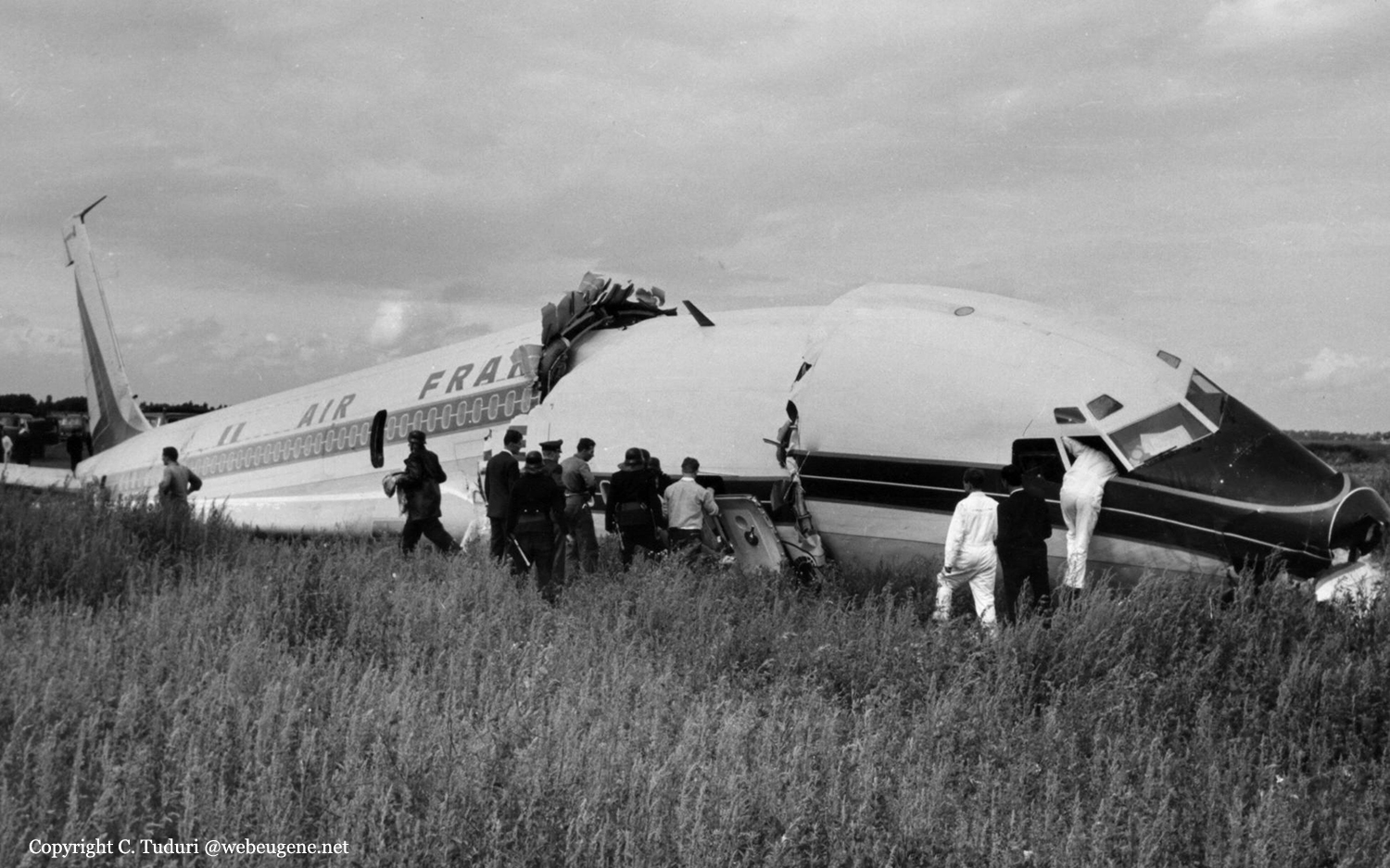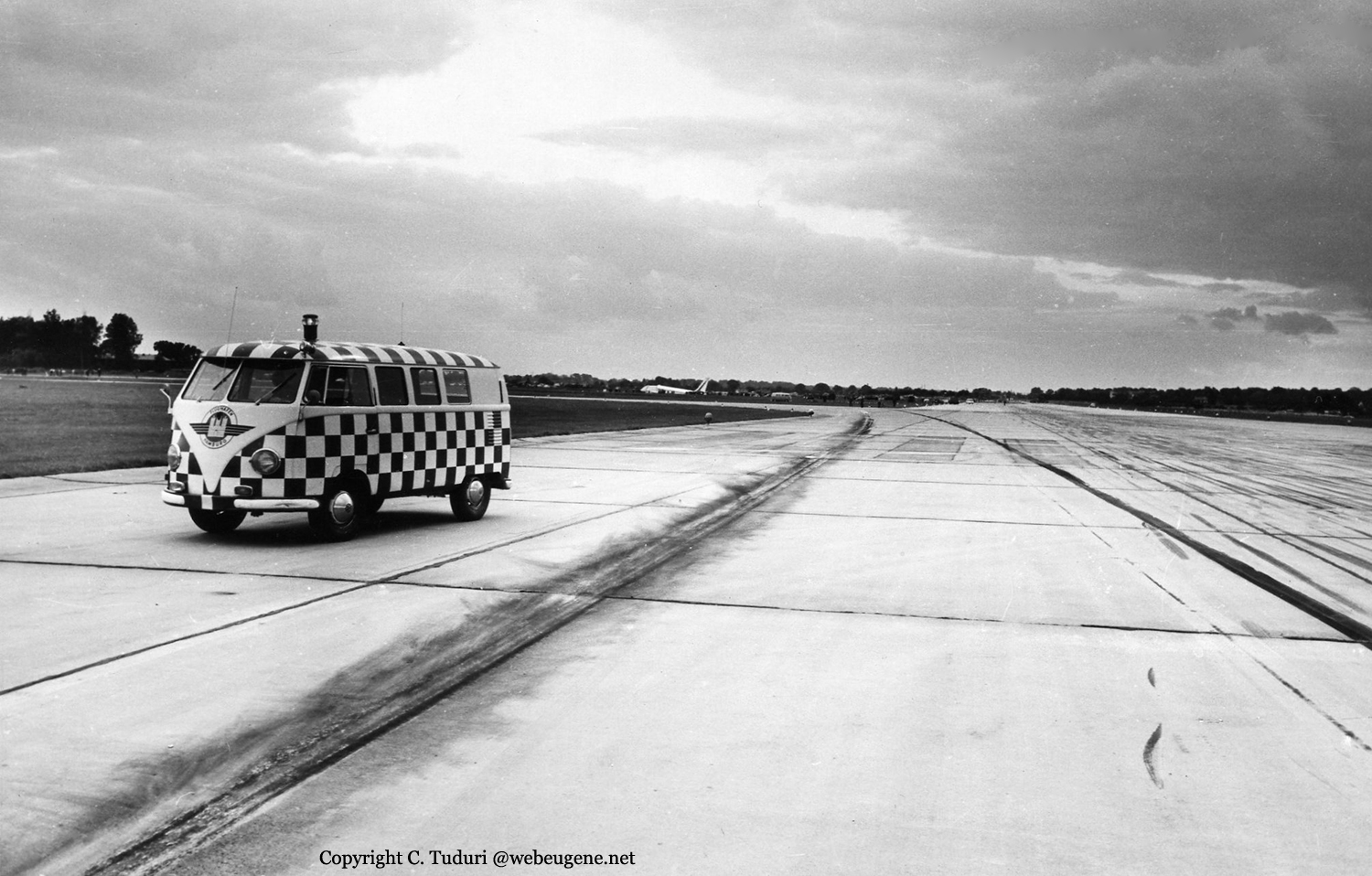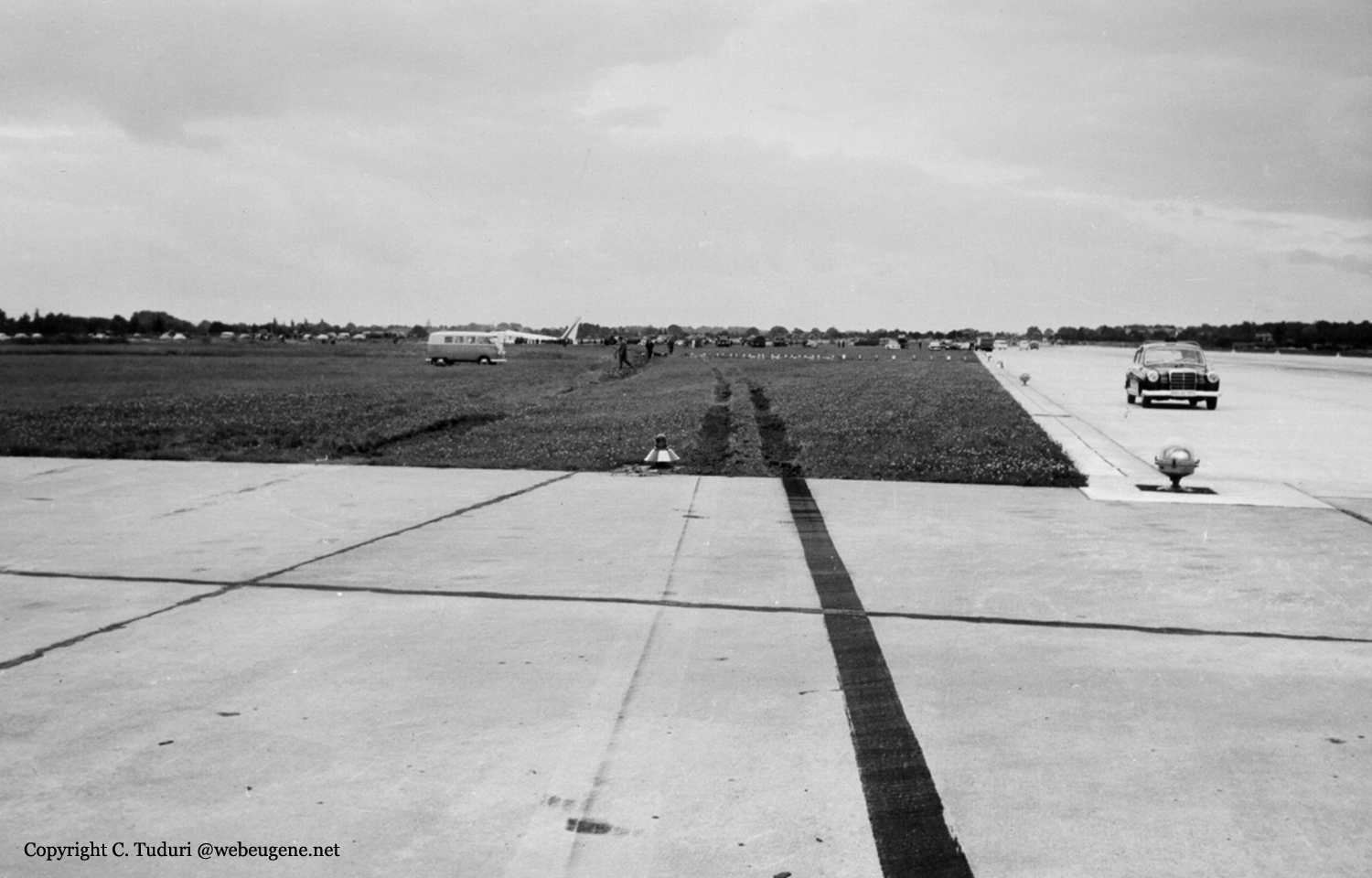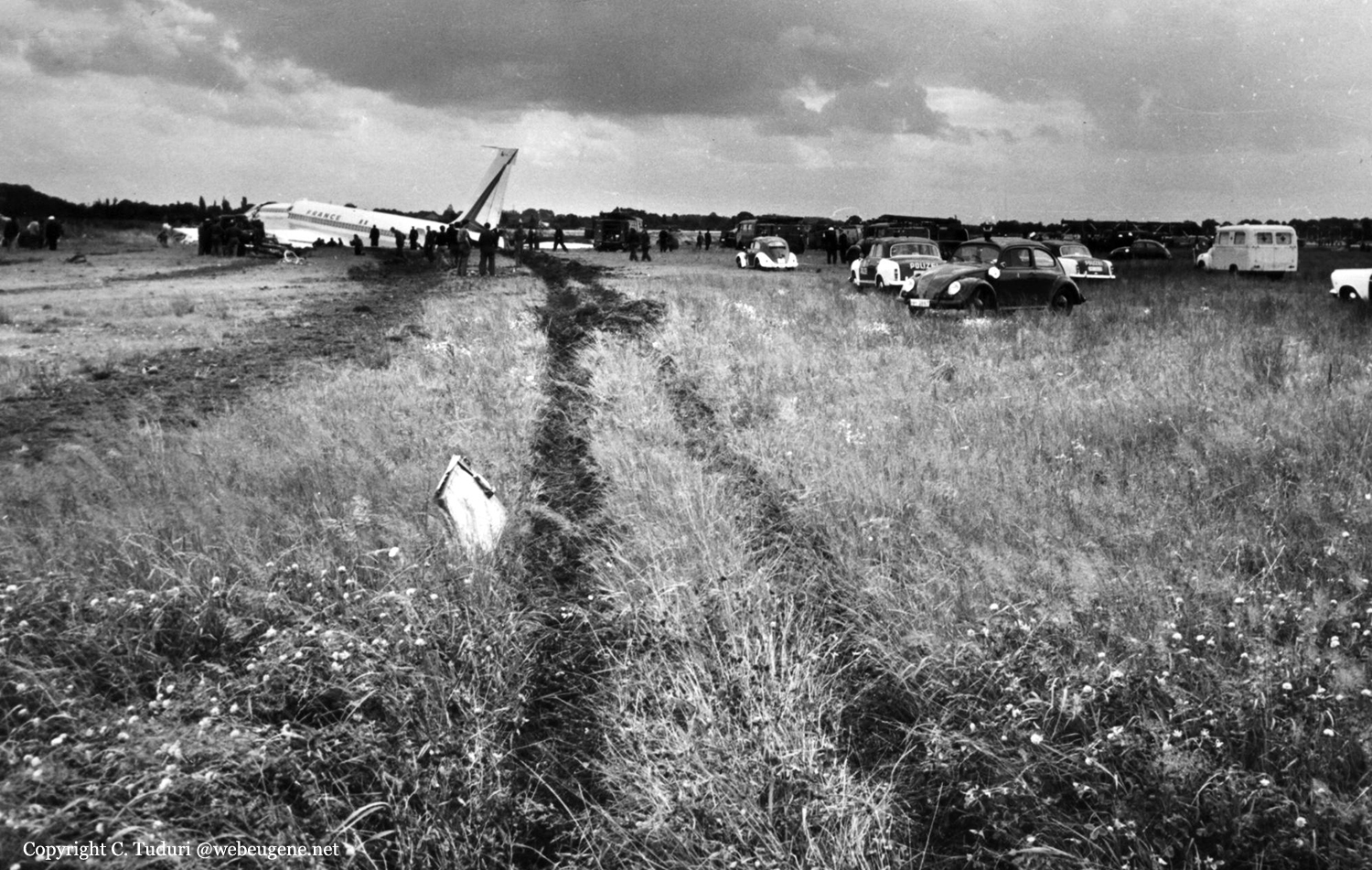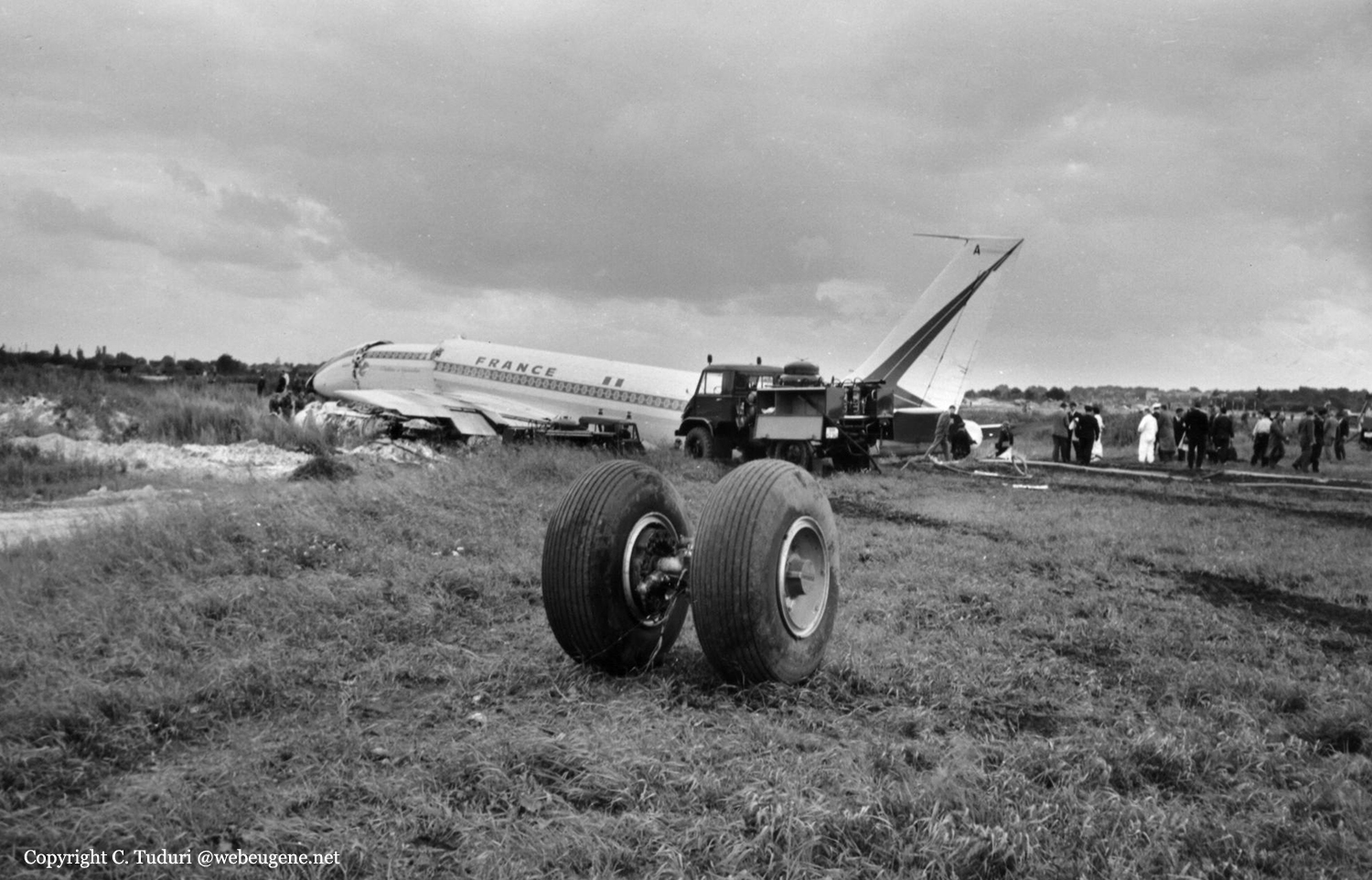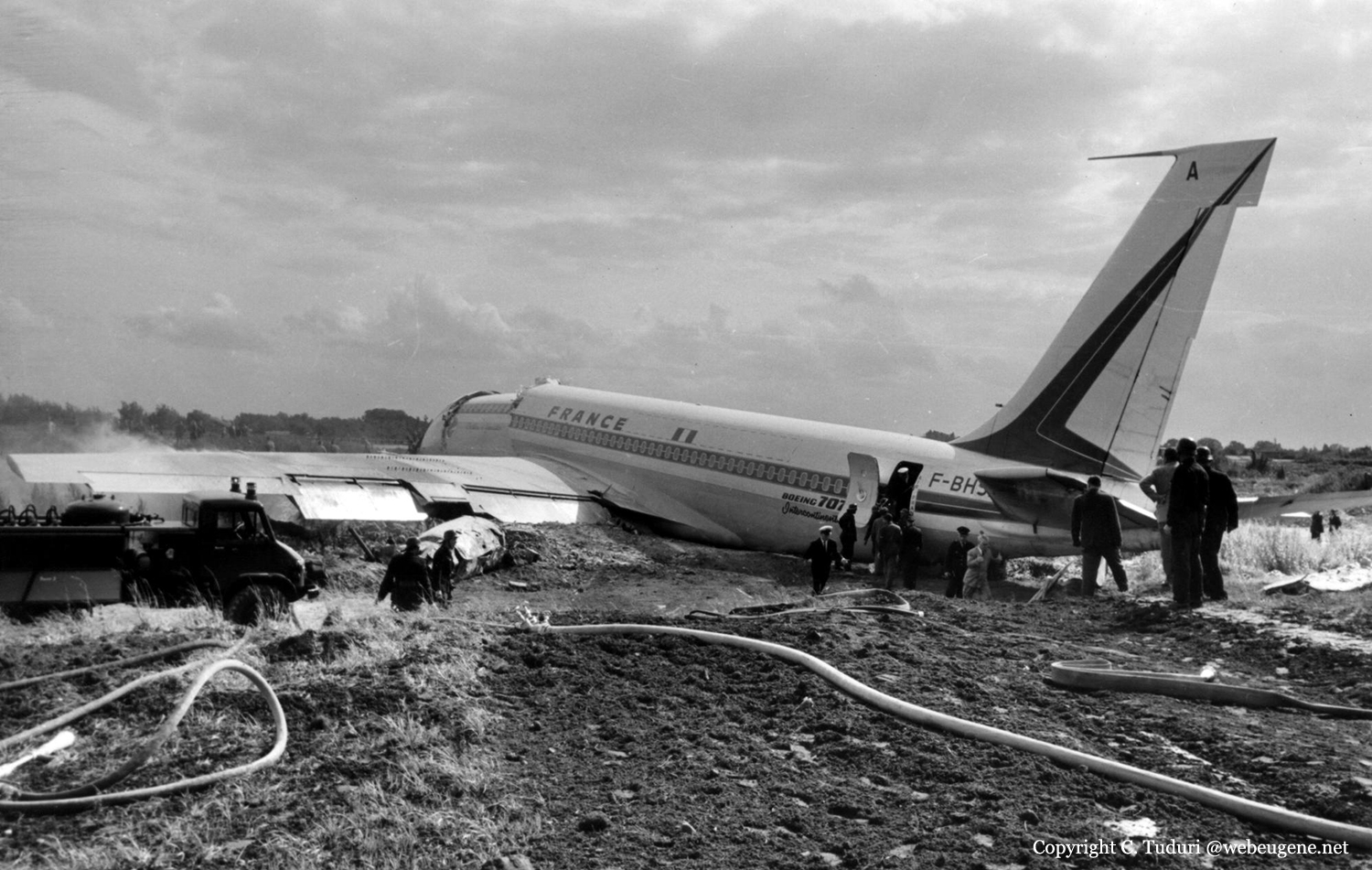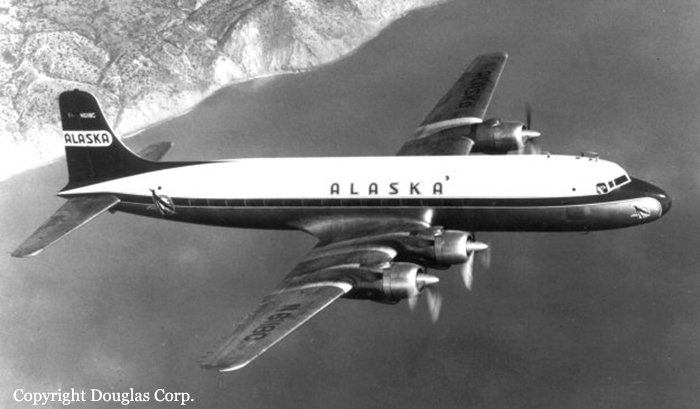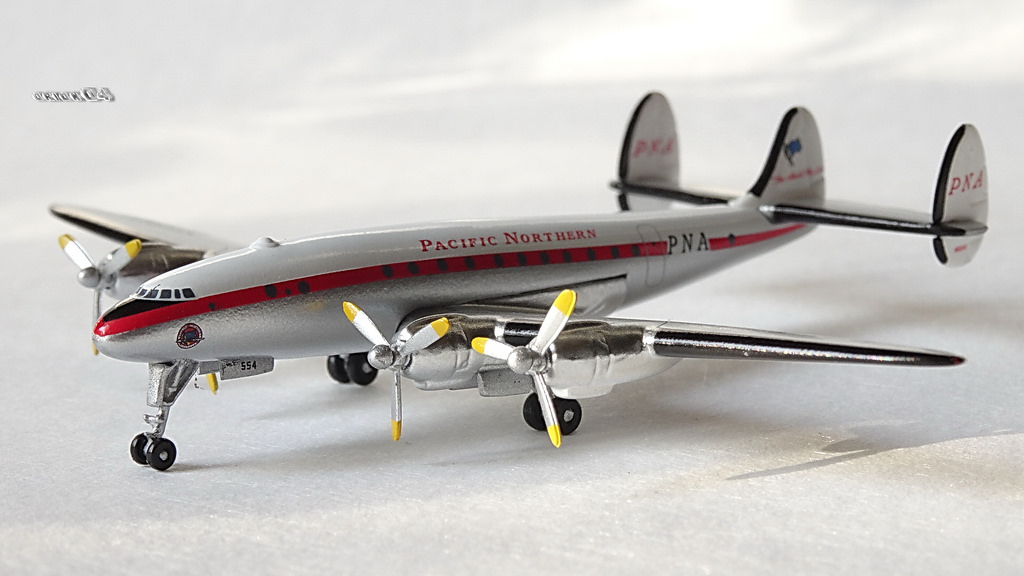Crash of a Boeing 707-328 in Hamburg
Date & Time:
Jul 27, 1961 at 1620 LT
Registration:
F-BHSA
Survivors:
Yes
Schedule:
Paris – Hambourg – Anchorage – Tokyo
MSN:
17613
YOM:
1959
Flight number:
AF272
Crew on board:
15
Crew fatalities:
Pax on board:
26
Pax fatalities:
Other fatalities:
Total fatalities:
0
Captain / Total hours on type:
401.00
Copilot / Total hours on type:
960
Aircraft flight hours:
3978
Aircraft flight cycles:
1080
Circumstances:
During the takeoff roll on runway 23, at a speed of 120 knots, the captain noted the aircraft was turning slightly to the left and was unable to counteract. As a result, he decided to abandon the takeoff procedure and attempted an emergency braking maneuver. Unable to stop within the remaining distance, the airplane overran, lost its undercarriage and came to rest in a field located 140 meters the runway end, broken in three. Four crew members and six passengers were seriously injured while 31 other occupants were unhurt. The aircraft was destroyed.
Probable cause:
The cause of the accident could not be determined with certainty. However, it was reported that a valve on the engine number two remained closed, causing the reverse system to deploy on that engine and the deviation of path during the takeoff procedure.
Final Report:
